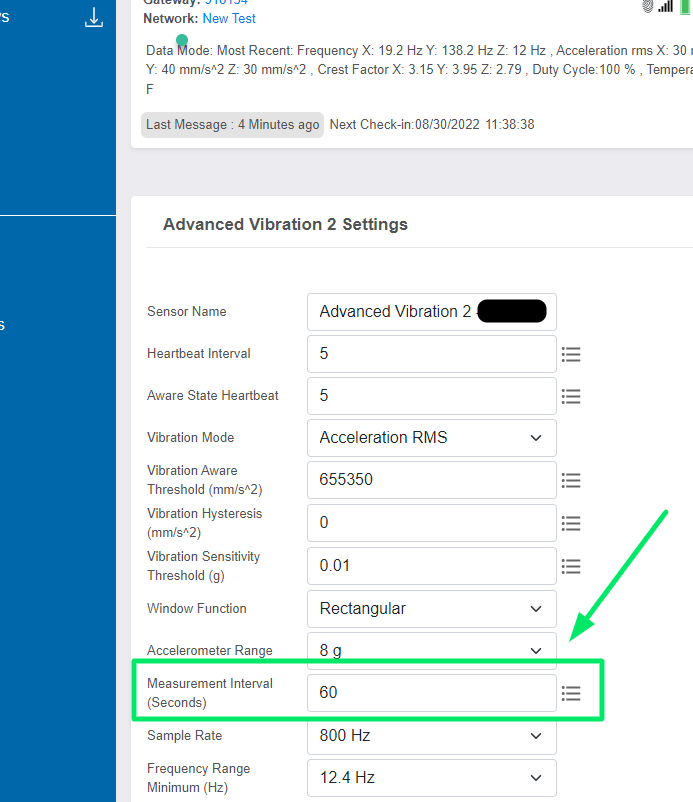Understanding the Measurement Interval Sensor Configuration
The Measurement Interval (also referred to as the Averaging Interval) is a configuration on some Interval Sensors which controls how often the sensor makes an assessment within the sensor’s Heartbeat. The measurements taken on this interval are temporarily stored until the following Heartbeat transmission at which point the measurements are used to calculate the readings presented by the sensor.
The Measurement Intervals occur with the frequency configured (usually in minutes or seconds) between sensor Heartbeats.

Sensor types that use Measurement Intervals
Current Meter: The current Meter is an interval sensor which presents the following data: Ah (for the Heartbeat period), Maximum current, Minimum current, and Average current over the Heartbeat period. This sensor will take samples of the current on each Measurement Interval (default 5 seconds) and use those measurements to report the Ah and Max/Min/Avg current for the Heartbeat period. It also uses the samples taken on the Measurement Interval to determine if the sensor should report an Aware Reading and check in before its scheduled Heartbeat (similar to an Assessment per Heartbeat on other interval sensors as you mentioned).
Advanced Vibration Meter: The Advanced Vibration Meter takes 256 samples at the configured Sample Rate on each Measurement Interval. The sensor then Uses the data collected to determine 1- if the vibration data measured breaches the Aware State Threshold triggering an immediate Heartbeat transmission; and 2- to determine the Duty Cycle reading to be calculated and reported on the Heartbeat.
Standard Vibration Meter: Measurement Interval Determines how often the sensor takes a measurement. Measurement interval is used in conjunction with Sensitivity Threshold to calculate Duty Cycle. Duty Cycle percent minus the number of measurements above Sensitivity Threshold / total number of measurements within a single Heartbeat Interval. Recommended to set the heartbeat to a multiple of the measurement interval.
G-Force Max and Average: This sensor offers a configurable number of Measurements per Heartbeat Interval and Measurement Time. These configurations determine how frequent the sensor takes samples to determine the Max and Average G-Force values to report over the Heartbeat period.
CO2 Meter: The default value is 1 minute. This is how often the sensor makes a measurement.
PAR Light Meter: The Measurement Interval configuration on this sensor determines the Frequency of photosynthetic photon flux density (PPFD) measurements used to calculate PAR DLI.
When this configuration is sent to the sensor, the sensor will reset PAR DLI.
Comparison to Assessment per Heartbeat
The Measurement Interval/Averaging Interval operation is very similar to an Assessment per Heartbeat. It is used to determine if the configured Aware State Threshold has been breached in which case an immediate transmission is triggered. It differs in that it is also used to calculate the readings reported by the sensor during scheduled Heartbeats. In other words, the samples taken on Measurement Intervals are used in sensors that compute the readings on the Heartbeat based on the samples taken during Measurement Intervals whereas Assessments taken in between Heartbeats are discarded unless they breach the Aware State Threshold.
Sensors that use Measurement Intervals often report maximum, minimum, or average values, duty cycle, and/or measurements on scales that occur over time.